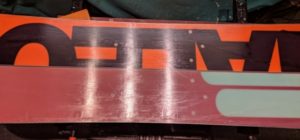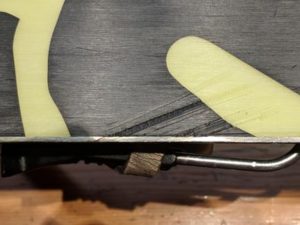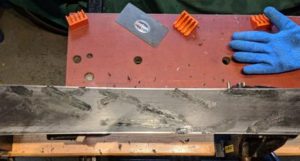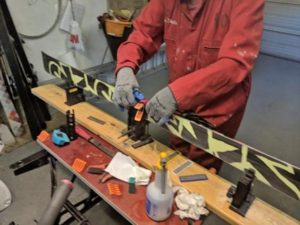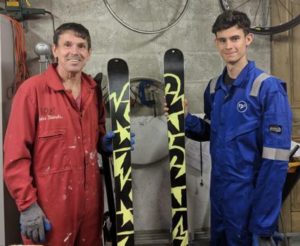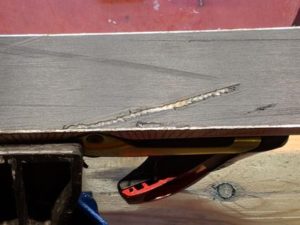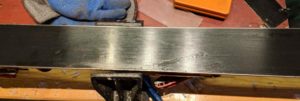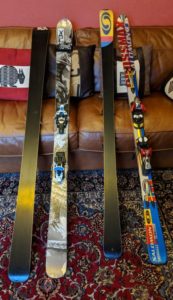Michael won the race to be the first Eastern European client at the Cave. Sadly he didn’t hand over a set of Soviet-era sturdy planks for attention, but instead some decadent western Salomon X-frees. These date from around 2001 and the Salomon sales blurb from that time calls them “shaped” (they are about 3 mm narrower at the waist than the tips) and “all mountain”. Now I know people used to ride powder in the black & white days on toothpick-wide skis because I’ve seen some grainy super-8 footage, but still, with just 62 mm under your foot it doesn’t feel like you’ll be floating across the soft stuff. Just a year later Salomon were offering the CrossMax Carve which had a properly shaped body but frankly old duffers, myself included, just weren’t ready for skis that turned all by themselves. And after years of lusting after 220 cm arrows who could seriously be seen on fat 160’s?
Enough nostalgia, what sort of shape were the X-frees in? Well, there was plenty of filling to be done and the edges seemed to have escaped any attention at all over the years. But that’s no bad thing – better than having endured endless base grinds & wobbly handheld grinder edging efforts.
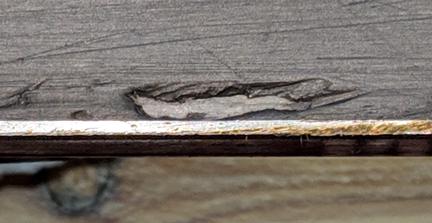
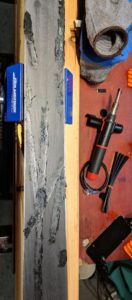
Once the bases were filled, scraped & restructured the edges were easy enough to sort out. The base edges were really scored but that’s to be expected if they had a hard life in a rental shop. The side edges were in reasonable shape and they came up nicely. The top sheet of the skis is made from some wacky metallic wrap that comes off like swarf when you plane the sidewalls but I guess it’s tough as the tops look like new.
Finally here’s a picture of them in their full 185 cm glory. Further proof that you can bag a bargain by buying used and refurbishing back to good condition.


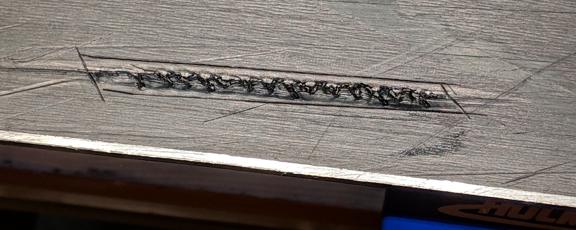
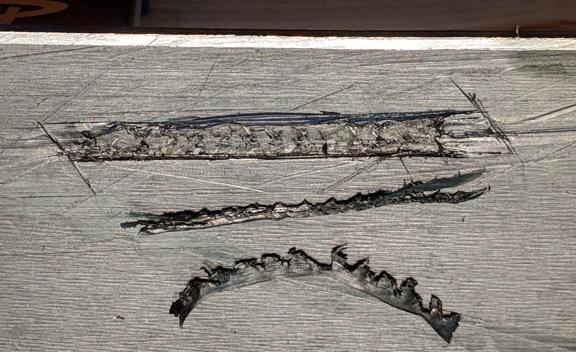
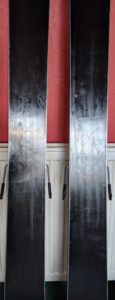
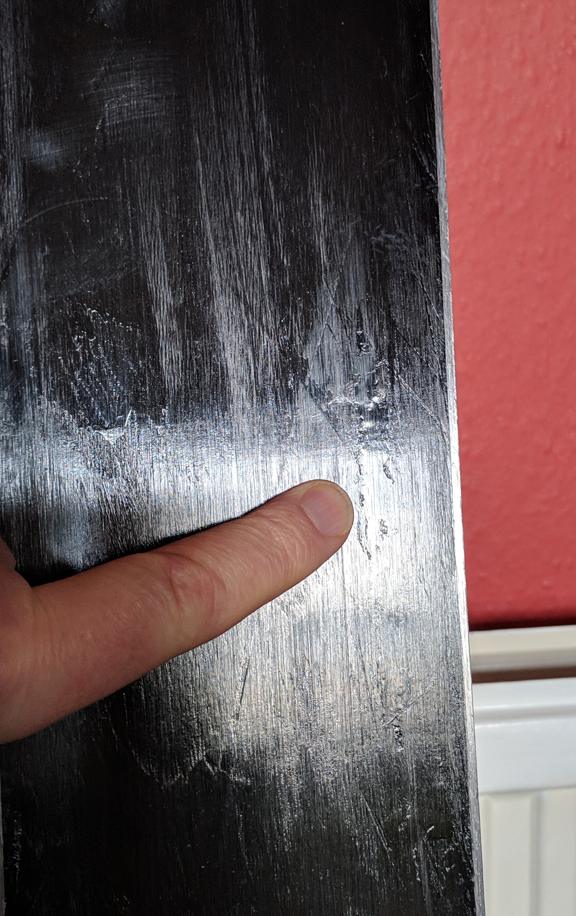


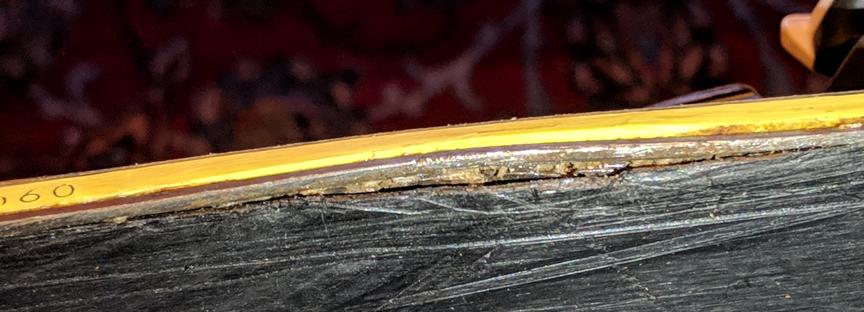


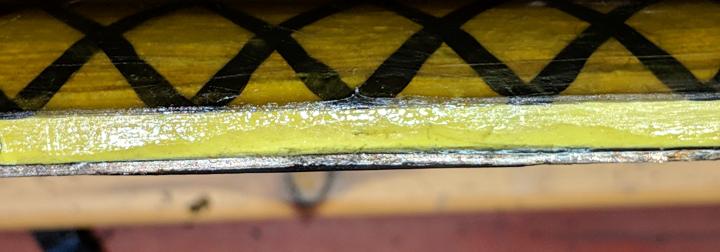
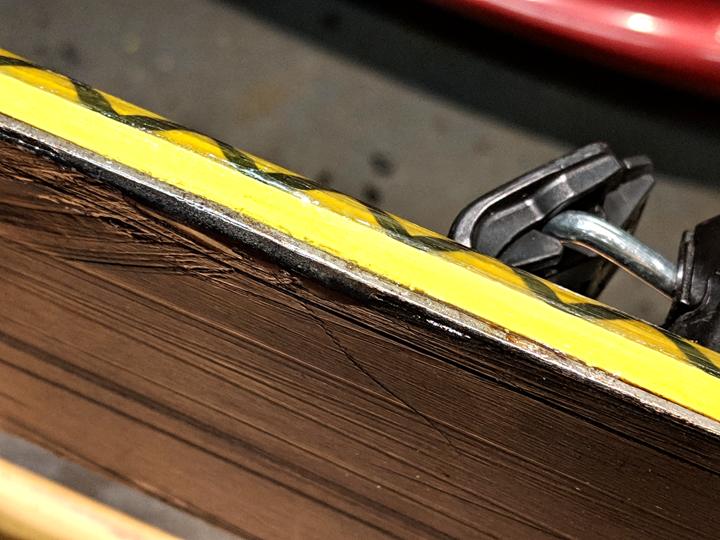
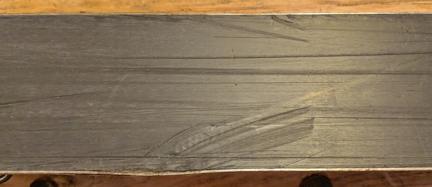
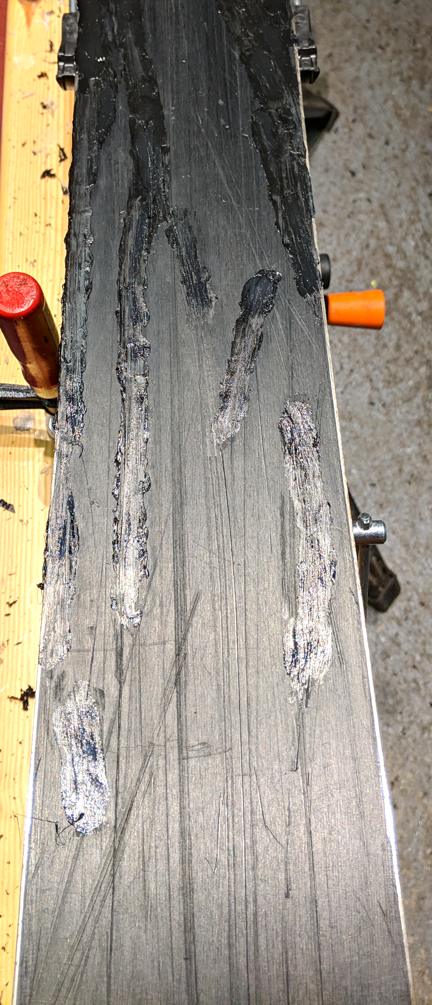
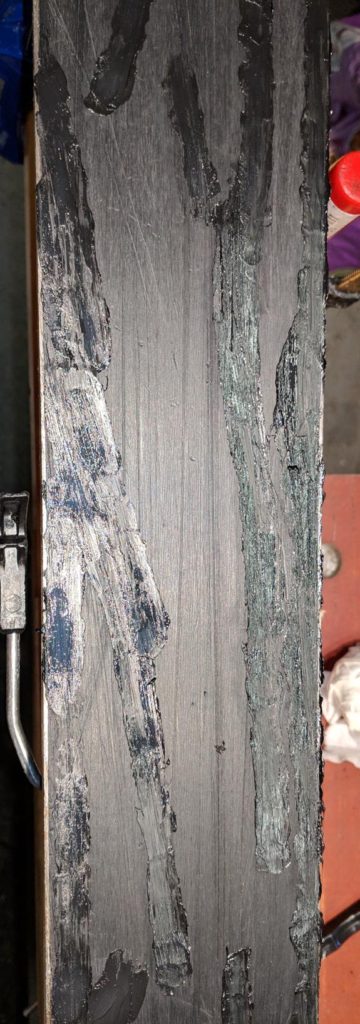

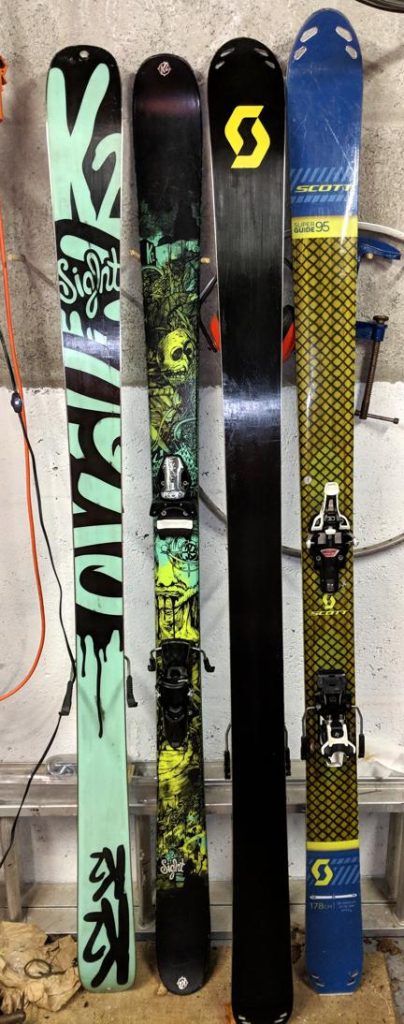

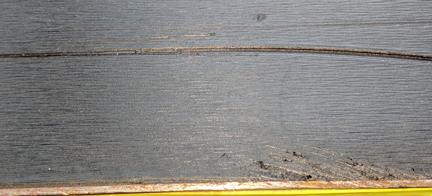
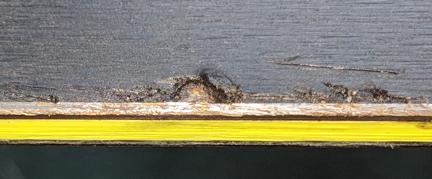
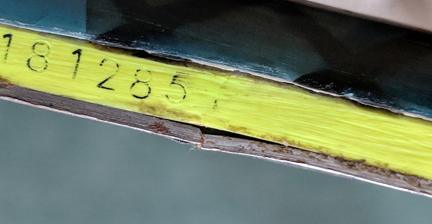
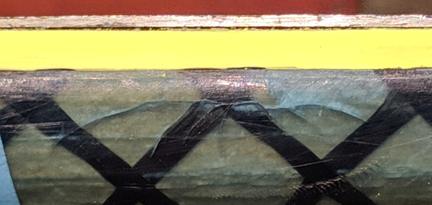


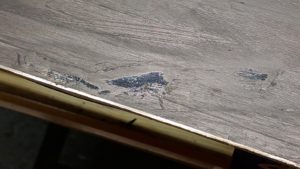
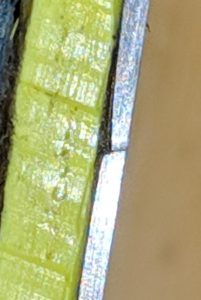
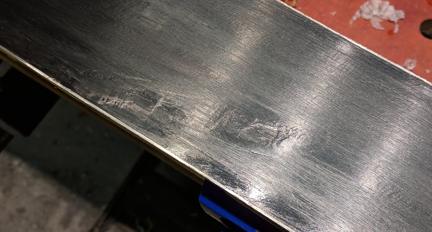

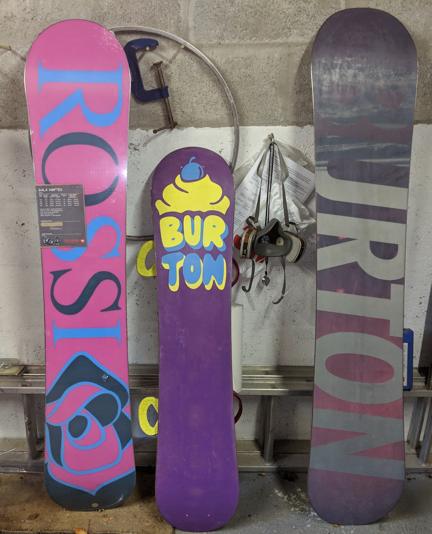
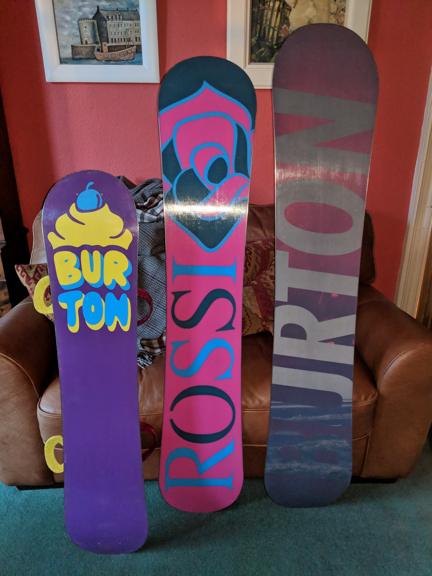
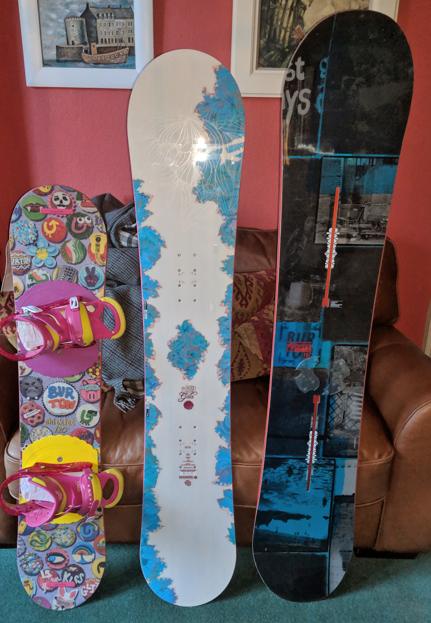
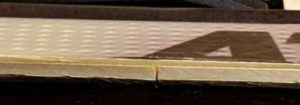
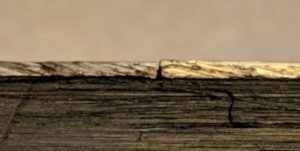 Hard to see any peripheral damage to explain what insult actually caused the split; usually there is a gouge or bulge from the rock but I can’t really see any smoking gun here. What you can see, for technical interest, is a little burr at the bottom of the side edge to the left of the crack. These are the very devil to photograph and it’s good to see I snapped this one by accident.
Hard to see any peripheral damage to explain what insult actually caused the split; usually there is a gouge or bulge from the rock but I can’t really see any smoking gun here. What you can see, for technical interest, is a little burr at the bottom of the side edge to the left of the crack. These are the very devil to photograph and it’s good to see I snapped this one by accident.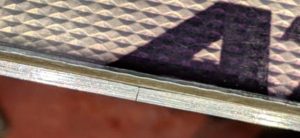
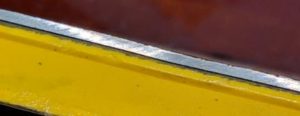 That’s because the light is reflecting of the left hand side of the ding. It’s not massive but again, once it’s been filed into submission we need to mark up this ski so that the ding stays on an outside edge from now on.
That’s because the light is reflecting of the left hand side of the ding. It’s not massive but again, once it’s been filed into submission we need to mark up this ski so that the ding stays on an outside edge from now on.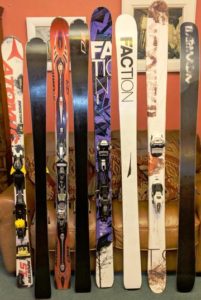
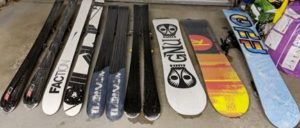 The annual multi-channel, multimedia, star-studded marketing blitz resulted in 4 sets of skis & 3 boards arriving to kick the season off. Here they are during the dullest part of any service – dewaxing/base cleaning.
The annual multi-channel, multimedia, star-studded marketing blitz resulted in 4 sets of skis & 3 boards arriving to kick the season off. Here they are during the dullest part of any service – dewaxing/base cleaning.
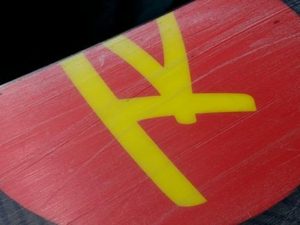
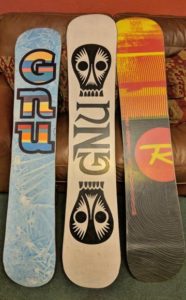 edges too but nothing terminal.
edges too but nothing terminal.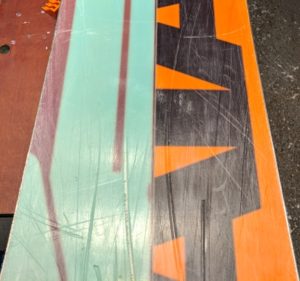 The gouge just left of centre has gone through the P-tex base, the underlying fibreglass and into the core of the board.
The gouge just left of centre has gone through the P-tex base, the underlying fibreglass and into the core of the board.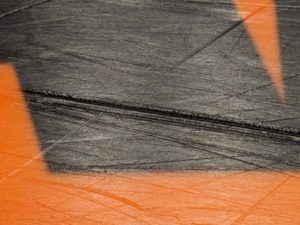
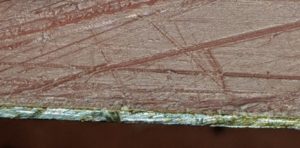
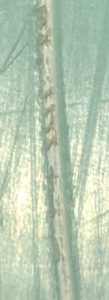 So once the anaesthetist & theatre nurses had been assembled we were ready to go to work. First off the broken ends of the fibreglass have to be cut and the edges of the big gouge smoothed off – both jobs for a sharp penknife. Although in theory the glass reinforces the resin, and therefore this piece of the board sandwich, the loss of integrity of a few broken fibres is neither here nor there so we can sweep along. One the cut is cleaned up it’s good practice to melt some metalgrip into the wound first as it is basically P-tex with a bit of glue and it should adhere better to the underlying layer. Once the metalgrip has had 15 mins to cure it’s time to melt the P-tex in over it – and the two thousand other gouges. Once that’s done the board is probably as ugly as it gets, covered in black & clear plastics:
So once the anaesthetist & theatre nurses had been assembled we were ready to go to work. First off the broken ends of the fibreglass have to be cut and the edges of the big gouge smoothed off – both jobs for a sharp penknife. Although in theory the glass reinforces the resin, and therefore this piece of the board sandwich, the loss of integrity of a few broken fibres is neither here nor there so we can sweep along. One the cut is cleaned up it’s good practice to melt some metalgrip into the wound first as it is basically P-tex with a bit of glue and it should adhere better to the underlying layer. Once the metalgrip has had 15 mins to cure it’s time to melt the P-tex in over it – and the two thousand other gouges. Once that’s done the board is probably as ugly as it gets, covered in black & clear plastics: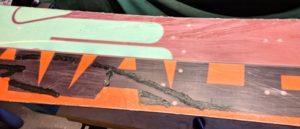 However the excess P-tex is easily scraped off and soon looks flat but dull. It’s time to structure the base using the Ski-Visions ruby stone for a clean cut, non-hairy base. Obviously the kooky Bataleon 3-D base with its wings & bulges means I can’t structure the base using the
However the excess P-tex is easily scraped off and soon looks flat but dull. It’s time to structure the base using the Ski-Visions ruby stone for a clean cut, non-hairy base. Obviously the kooky Bataleon 3-D base with its wings & bulges means I can’t structure the base using the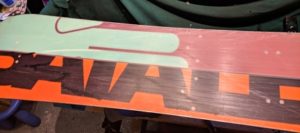 ergonomic tool but have to use a bit of broken ruby stone instead. Anyway the base is relatively soft and it’s not a long job. The structure blends the repairs in with the virgin base and gives the base wax something to bite on as well.
ergonomic tool but have to use a bit of broken ruby stone instead. Anyway the base is relatively soft and it’s not a long job. The structure blends the repairs in with the virgin base and gives the base wax something to bite on as well.